- Alden Edson
- Research Assistant Professor
- Promoting Productive Disciplinary Engagement and Learning with Open Problems and “Just-in-Time” Supports in Middle School Mathematics
- https://connectedmath.msu.edu/research/funded-projects/
- Michigan State University
- KRISTEN BIEDA
- http://www.kbiedamathed.com
- Associate Professor
- Promoting Productive Disciplinary Engagement and Learning with Open Problems and “Just-in-Time” Supports in Middle School Mathematics
- https://connectedmath.msu.edu/research/funded-projects/
- Michigan State University
- Chad Dorsey
- https://concord.org/about/staff/chad-dorsey
- President and CEO
- Promoting Productive Disciplinary Engagement and Learning with Open Problems and “Just-in-Time” Supports in Middle School Mathematics
- https://connectedmath.msu.edu/research/funded-projects/
- Concord Consortium
- Nathan Kimball
- https://concord.org/about/staff/nathan-kimball/
- Curriculum Developer
- Promoting Productive Disciplinary Engagement and Learning with Open Problems and “Just-in-Time” Supports in Middle School Mathematics
- https://connectedmath.msu.edu/research/funded-projects/
- Concord Consortium
- Elizabeth Phillips
- Senior Academic Specialist
- Promoting Productive Disciplinary Engagement and Learning with Open Problems and “Just-in-Time” Supports in Middle School Mathematics
- https://connectedmath.msu.edu/research/funded-projects/
- Michigan State University
Public Discussion
Continue the discussion of this presentation on the Multiplex. Go to Multiplex





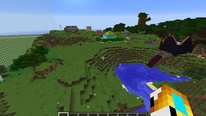
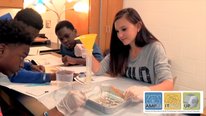
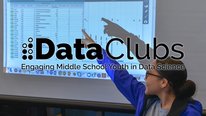
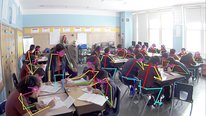

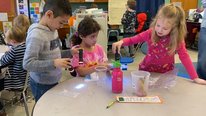
Alden Edson
Research Assistant Professor
We hope you enjoy our video featuring a digital collaborative platform. The goal of the video is to highlight a digital collaborative environment that can improve the teaching and learning of mathematics in diverse classroom settings. The environment builds on an existing NSF-funded digital collaborative platform and an NSF-funded problem-based curriculum. We are leveraging the unique affordances of technology for 21stcentury learners to build a “living” textbook where social, carefully structured mathematics learning can promote disciplinary engagement in mathematics. We invite you to make comments and ask questions.
Becky Matz
Hi AJ -- I'm a fellow Spartan working in STEM education (I'm in the Hub). Really enjoyed your video! Thanks for sharing. It looks like these materials are helpful for getting students to discuss and explain their thinking when learning math.
Alden Edson
Research Assistant Professor
Thanks, Becky. One of the things we often hear is how easy it is for students to create multiple representations of their mathematical thinking using the digital tools. And when students discuss their thinking, they often publish or share their their work and students can incorporate "copies" of that thinking into their work and make any changes.
Amit Sharma
Hi Becky.
Thanks for your comment. I am a graduate student and have been on a research assistantship with the Connected Mathematics Project since the start of this project. To add on to what AJ has mentioned, I would say that the ease of sharing lends itself to increased accountability on the part of the students.
I am aware of some of the very interesting projects going on through the HUB. I hope that as this crisis gets over we will get the opportunity to connect in person and discuss some ideas about potential new projects for CMP.
Bonnie Hall
I found the part of your video about tracking engagement and collaboration in the classroom setting intriguing. Although our project (BASIL) doesn't capture real-time computer data, it could be very interesting to record some of our students using the BASIL materials, and connect their various interactions and steps they take with our specific anticipated learning outcomes. Your video has gotten me thinking about the behind-the-scenes development in a new way--thank you!
Alden Edson
Research Assistant Professor
Thanks, Bonnie, for your comment. Most of our data analysis focuses on computer screen recordings but we're also exploring how the analytics information from the digital platform (that records data log files) can inform our research efforts as well.
Michael I. Swart
Thanks, Alden, This is great work for students and teachers.
Can you talk about the data that you get from the recordings? Constructs? Measures? Assessments? Performances? Validity and Reliability? Connection to traditional metrics (e.g., grades, improvement scores, state assessments)?
KRISTEN BIEDA
Associate Professor
Thanks for your interest, Michael! Our research primarily focused on the collection of video and screencast data from focus groups from all of our project classrooms to look closely at evidence of productive disciplinary engagement as students interact with the platform. We are also just at the beginning of analyzing learning analytics that the platform produces for additional evidence of productive disciplinary engagement. We also have teacher interview data that suggest the digital environment has potentially measurable impact on learning, especially for students who are not as engaged with the traditional paper-and-pencil version of the curriculum. We hope to connect this with achievement data in future work.
Leslie Bondaryk
Those of you who are interested in some of the ways we are able to trap and gather usage data may want to read this article about how the files are constructed: https://concord.org/newsletter/2020-spring/sharing-real-time-collaborative-documents/
The format is important both because it is what allows the realtime view for peers and teachers, and because it allows us to build a "play by play" of how students construct their responses to questions. That, in concert with the clickstream data we retain on what actions students take as they move through the material builds a unique view into the entire ebb and flow of inscriptional activity in the classroom. We are analyzing this now, and as Alden mentions elsewhere will be publishing results soon.
Kathy Dole
This is very exciting work. As I was watching this I was thinking about the current issues facing so many teachers during the Covid 19 pandemic. This platform could help teachers in this "teaching from home" environment. So many teachers are looking for ways to continue using CMP the way it was intended but they are struggling with the correct tools to make that happen. Teachers are in need of ways to have students work in virtual groups and capture that thinking to preserve a problem solving approach to learning during this pandemic. If more teachers had access to this technology it would be wonderful!
Sarah Hampton
Alden Edson
Research Assistant Professor
I agree, Kathy. We have been having similar kinds of discussions in project meetings. We went into the project hoping to enhance collaboration in face-to-face classrooms. And with the COVID-19, I think there is some potential worth exploring for remote learning. The digital platform would allow students to see and share their work with other students (and the teacher). What I'm wondering about is what kind of support is also needed to support small group and whole group discussion.
Sarah Hampton
Margo Murphy
Science Instructor
Great work! I have several questions... You mention 2 years to get to the nuggets/protocols of what demonstrates students being able to demonstrate mathematical understanding... are these available for public view? I would also love to see more student dialogue around their understandings. Looks like really important work bridging technology and mathematical understanding. Is any of this publicly available now?
Alden Edson
Research Assistant Professor
Thank you for your questions. We are currently writing a manuscript that reports on the framework and offers examples on the use of the framework. But we are a few weeks out before submitting.
You may be interested in our current dissemination efforts, which I'll add a link below. In particular, I would recommend the PMENA paper on the nature of uncertainty in mathematics classrooms (Going, Kursav, Slanger-Grant, Bieda, & Edson, 2018).
Project dissemination link: https://connectedmath.msu.edu/research/ongoing-...
Margo Murphy
Deborah Moore-Russo
Love the just-in-time supports that this provides as well as the collaboration that is support.
Alden Edson
Research Assistant Professor
Thank you! :)
Karl Kosko
Very interesting project!
I'm wondering how use of the platform has changed with current stay-at-home protocols.
Alden Edson
Research Assistant Professor
Our work is focused on a couple units at the seventh grade level. Luckily, our field testing this year mostly finished right before the stay-at-home protocols. But we are thinking about ways to expand field testing next year, including exploring ways to support remote learning.
K. Renae Pullen
Specialist
That ending "ooh" made so happy! This is really inspirational work and could have an interesting impact on current curriculum and classroom practices on a larger scale. (1) What's your vision for the future and (2) do you see this being a tool for elementary school- if so, how?
Alden Edson
Research Assistant Professor
Good questions, Renae.
Question 1 - Next year we are hoping to expand our testing with a few more CMP teachers. As a design research project, we have developed the digital platform using an agile development process involving rapid cycles of development, testing, and feedback. So next year we would like to see how the digital platform is used with teachers that have not been part of the design process to gain additional feedback on its usability and feasibility.
Question 2 – As a first reaction, maybe at the upper grade levels. I say this because we are working very hard to make the tools very intuitive for students. But I’m wondering about the nature of mathematics classrooms between elementary and middle schools, particularly around mathematics problems. In that sense, there may need to be adaptations or modifications. That being said, I know other projects are working hard to create digital solutions at the elementary grade levels. I would check out the INK-12 project if you are not familiar.
K. Renae Pullen
Elizabeth Phillips
Senior Academic Specialist
Renae,
One of the outcomes of the project that is intriguing to me is that each of the participating teachers has reported that some students are engaged with the mathematics that weren’t in the paper and paper pencil environment. While it is only a small set of classrooms, I am curious to see if we get similar comments next year. I have many conjectures as to why this might happen and many more questions, but we need more data.
K. Renae Pullen
K. Renae Pullen
Specialist
Thank you both for your thoughtful responses! Alden, I'll check it out for sure. Elizabeth, I look forward to seeing what you all present next year!
Lynda McGilvary
Communications Director
This is an impressive project! You mentioned this is a multi-year program. Are you collecting any longitudinal data as part of your research?
Alden Edson
Research Assistant Professor
We are not collecting and analyzing any longitudinal data. Our design research project makes use of the agile development process, which means that we are iteratively designing, developing, testing, collecting data, and gathering feedback. Multiple times per year. Each year we gradually add more and more features for students and teachers to support their enactment of the CMP curriculum. We also have been working closely with the same teachers and their students (new students each year). So we have been following the design research project throughout the years, but not necessarily studying longitudinal data in the traditional sense where we would be looking at characteristics of the population of students and teachers.
Michael Horn
This looks so cool. It feels like you've taken a really thoughtful approach that balances curriculum design, innovative pedagogical approaches, and technology. Nicely done.
KRISTEN BIEDA
Associate Professor
Thank you Michael!
Nathan Kimball
Curriculum Developer
Thank you, Michael. The balance that we tried to strike in our technology design efforts at Concord Consortium were informed by the strong pedagogical philosophy developed over many years by the MSU team prior to this project. This foundation served as a reference for our work. CMP teaching emphasizes collaboration, seeking a multiplicity of approaches to problems, and a continual refinement of ideas. Each of these elements had direct consequences for software design. For instance, in small group collaboration, each student has his or her own workspace, but group members can easily see and share each other's work. Students can choose to publish their work to the class to present a wide variety of approaches. Teachers can see all students' work and select and share back a variety of approaches to problem solutions for discussion. Students can keep a persistent log of their reflection of major ideas or exemplary problems that show evidence of the growth of their ideas. The final and crucial input to the design process was provided by the unstinting feedback provided by the field test teachers and students who made sure we were on track.
Sarah Hampton
Heather Walker
I found the video fascinating particularly as it relates to Math, a subject that I have always struggled with due to delayed recall of visual information. In fact, I watched it twice and then shared it with a friend who is a teacher to Special Needs students. She is a very innovative educator and I thought of her immediately.
When I think about what I've seen, I can only imagine how such an opportunity for students would ignite such a fascination for the subject and problem solving with other classmates, helping one another instead of struggling within oneself not knowing how or where to start, The program also helps students become aware of how differently each other student works out problems, so they are always learning from one another in addition to the material that they are working on - I would be very interested in teacher responses.
Sarah Hampton
Nathan Kimball
Curriculum Developer
Hi Heather, Thanks for giving our video a careful view and for sharing it. I think your observations are right on! At Concord Consortium we have been impressed that the collaborative approach of the CMP curriculum re-orients math study from getting the right answer to understanding a whole mathematical context for each topic area, say, proportion or linear relationships. It also makes mathematics discursive. Students need to be able to talk to each other to explain how they got their answers and understand on how different approaches relate to each other. Teachers' responses have generally been enthusiastic. So far, with have worked with a small pool of teachers who have seen us through from the beginning of the project and their 7th grade students. The teachers are very experienced with the CMP curriculum and so can give us a comparative description of how things have worked in the paper-and-pencil world as opposed to the digital world. Right away, some things work better in the digital world, like the seamless sharing of student work. When teachers report a preference for the paper-and-pencil approach for certain aspects of learning or teaching we direct our design effort to see how we can be better. There are certain things that may always be better on paper, the physical action of drawing or scaling, for instance. For these things, students can take a picture and incorporate it into their digital space to keep all of their learning together. Also, for teachers (and for us) there is a learning curve on how best to use this platform. With six or more groups working independently in a classroom there is a lot going on! We do plan this year to expand our classroom use to a larger number to get even greater real-world feedback.
Sarah Hampton
Elizabeth Phillips
Senior Academic Specialist
Heather,
Since our project is a design research project, we used a small set of CMP 7th grade field site teachers. Their input and enthusiasm from the beginning were very influential creating the collaborative digital platform. In addition, each teacher reported that more students were engaged in the problem-solving process than they were in a paper and paper environment. Next year we will expand the field testing to CMP 7th teachers who will be new to the digital environment, which will provide more information on teachers use of the environment.
Cynthia Callard
You know I love you guys and love your work! Great video providing an overview of this project and how the digital platform is supporting student collaboration and engagement related to disciplinary content knowledge. And you know that we have CMP teachers we continue to work with in Rochester if you need any more pilot sites!!
And of course now facing the challenge of how to do this remotely!?!
Elizabeth Phillips
Senior Academic Specialist
Cindy, thanks for your kind remarks.
Next year, during our no-cost extensions, we will test the viability of the platform with new sites across the country, with the possibility. Feel free to recommend any CMP seventh-grade teachers and have them indicate their interest in testing the digital platform on our website. We are also considering adapting the digital environment so that it is available for a year-long CMP mathematics course on a very small sample. Yes and the next challenge is remote access.
Dr. Tamara Smeltzer
What was done at the start of the project to build the culture in the classroom that encouraged students to trust each other and feel safe enough to ask questions?
Sarah Hampton
Nathan Kimball
Curriculum Developer
Good question, Dr. Smeltzer. My colleagues at MSU may want to chime in on this, but the CMP curriculum stretches from grades 6 - 8 with a consistent emphasis on students sharing their ideas. So, the culture is being developed starting in grade 6. We have been working with 7th graders, and, having spent a good deal of time in our field test classrooms, my observation is that students do feel safe enough to ask questions and share their ideas. Certainly, this culture does not develop overnight, and understanding how to cultivate it is an essential component of teacher professional learning which CMP has developed over many years.
Sarah Hampton
Elizabeth Phillips
Senior Academic Specialist
Dr. Smeltzer,
CMP is a problem based- curriculum which opens the mathematics classroom to exploring, conjecturing, reasoning, and communicating. Both the teacher and student take on more responsibility for the learning process. The CMP instructional model looks at instruction in three phases: launching, exploring, and summarizing that supports this kind of “inquiry-based” teaching. Teachers move from demonstrating how to do the mathematics to one who guides, prompts, questions, and facilitates students to do and make sense of the mathematics. In CMP classrooms teachers are encouraged to recognize and use student thinking more effectively in developing a deeper understanding, reasoning, and skills. Students collaborate, challenge each other, think in new ways, gain mathematical confidence, and communicate their understanding and reasoning as they solve problems. With support teachers become more comfortable in creating these collaborative environments. For more information about the collaborative nature of CMP classrooms, you might want to look at: connectedmath.msu.edu/.
Dave Miller
Terrific project, intriguing software engine, and very nicely presented in the video! Wondering what are your plans for scaling this beyond the current schools that are using it. Thanks!
Alden Edson
Research Assistant Professor
Thanks, Dave, for your question. Next year we are hoping to expand our testing with a few more CMP teachers. The current CMP teachers using the digital platform have been involved for several years. Now that we have a robust digital platform, we are interested in seeing how other CMP teachers use it. And of course we are also thinking about the nature and kinds of professional development needed as well.
William Zahner
Thanks for sharing this video. This is so cool to see! I have a very small (but maybe big :) design question for you: I noticed in some clips that students are working 1-1 with laptops and in other clips, the students are sharing a laptop. Did you specify when students should work with their own machine and when they should share? Have you noticed any difference in student engagement in productive disposition when students are working with a partner on a shared machine versus alone with a 1-1 setup?
This seems like a simple question, but then looking at the clips you selected, I noticed that even when students are working with 1-1 laptops, they still are looking at each others' machines, pointing, talking, and so on, so perhaps distinguishing "working on one's own machine" will be a challenge :). I ask because in our work in linguistically diverse classrooms we paired students when they worked on Desmos activities that we designed. Our rationale was that we wanted students to use the resource of their peers while engaging in problem solving. We found, however, that we had to put routines in place to make sure the students shared control of the machine. Thanks!
Sarah Hampton
Sarah Hampton
Interested in this question, too. I purposefully pair my students when using Desmos or PhET sims to foster communication/sense-making/collaboration. Since those kinds of skills are targeted in this project, I'm wondering if 1-to-1 is preferable.
Collaborative strategies tend to be a hallmark of my classroom, so making a sudden transition to 100% online learning with few opportunities to be "together" as a class was challenging for me. I love the possibilities here for continued collaboration from a distance--both synchronous and asynchronous.
Eric Hamilton
I have been interested in CMP for many years, and I like seeing this digitized platform experience. On the question of 1:1 or 2:1, we ran projects on tablet-based computing with screen-sharing, and discovered, by chance, that having students work in pairs provided a more durable and engaging experience than when the students were working on their own devices.
Sarah Hampton
Nathan Kimball
Curriculum Developer
I want to reply to both William and Sarah about the collaboration model. Despite what you saw in the video all of our classrooms were 1-to-1. Ultimately, each students does his or her own work. However, students do get up and look at each other's screens and you see them pointing. Students can see each other's work on their own computer, but (as of yet) we don't have a way for students to indicate shared attention between two members of a group on different machines. That could be an interesting feature. The important thing is that the students are discussing over a shared inscription. Pointing is a powerful method of sharing attention. This work was intended for face-to-face classrooms, so getting up and looking at each other's screens is a natural way to share. We are certainly giving consideration to enabling a collaborative distance learning situation where methods of discussion and shared attention would be required. These are some of the technical hurdles of moving to a distance learning model, but there are many others that we are trying to understand.
As for the pros-and-cons of shared machine vs. 1-to-1 when working with math apps or computer models, I think either can work. The shared machine approach can learn a lot from techniques developed for pair-programming that is effective in both industry and education. One member of a pair is designated at "Driver" and the other as "Navigator". Each has roles and responsibilities, and, generally, switching roles at regular intervals in important. (See this link for more information.) One-to-one allows each student to produce a product, which for many schools is essential. Certainly, that has been the case for us. Hope this helps.
Sarah Hampton